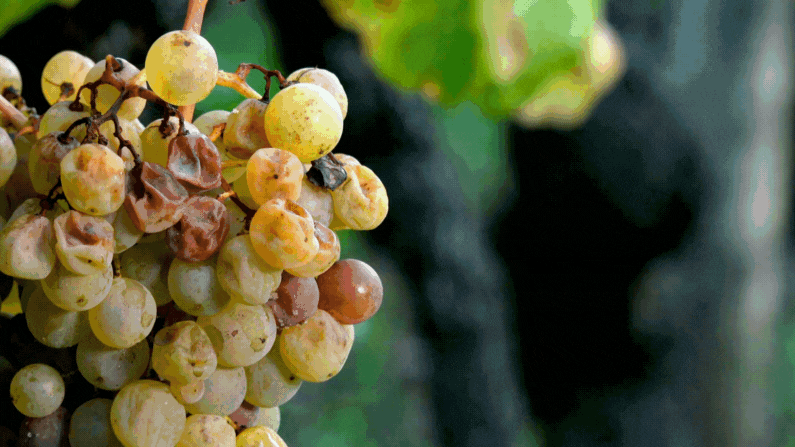
Noble Rot Wines: A Guide to the Premium Sweet Wines made from Rotting Grapes
The sound of ‘fungus attacked grapes’ spells doom to the ears of most. The image of rotting grapes in the vineyard is hardly a romantic one promising a good vintage. That is unless this fungus is the ‘Noble Rot’.
Noble rot is a beneficial form of a fungus called ‘Botrytis Cinerea’. It is challenging to have in the vineyard but when it attacks the grapes and spreads, the ‘botrytized grapes’ start a journey that ends in sweet, rare and premium wines that were once sought after and enjoyed by royalties. And while noble rot is not the only way a winery can produce sweet wines, it remains responsible for the most premium and rarest of sweet wines in the world, rocking great balance and aging ability.
The most iconic and classic examples of these wines are the likes of France’s Sauternes and Hungary’s Tokaji, that King Louis XIV referred to once as “the king of wines, the wine of kings.” But what are the delicate conditions under which this fungus can transform rotting grapes into liquid gold? What regions champion these wines and what is their future?
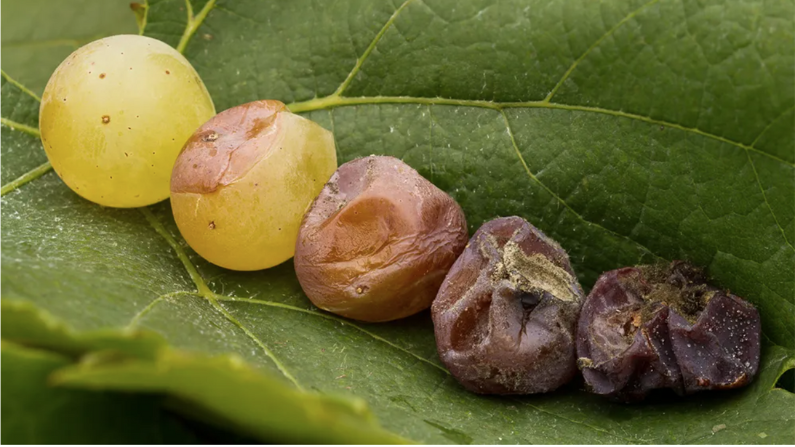
(Source: Oremus)
How can rotting grapes produce complex and highly enjoyable sweet wines? In a nutshell, noble rot dehydrates the berries, concentrating the innate flavors, sugars, and acids and on top of that contributes its own unique flavors and acid into the grapes. That is the easy part. The hard and risky part is this fungus growing successfully on the right berries in just the right weather conditions or else it becomes malicious and be referred to as ‘gray rot’, damaging the whole crop.
Here is the breakdown of how noble rot works: First, the fungus must attack healthy pale ripe/overripe grapes in a vineyard that is blessed with just the right duration and amount of humidity in the morning followed by aerated sunny dry afternoon. The mold punctures the grape skin in tiny holes, allowing water to evaporate, hence concentrating the sugars, flavors, and acids. Alternating moisture and sunshine is crucial to promote the growth of the mold in the morning and slowing it down in the afternoon while evaporating the water in the grapes. It is important to note that the moisture in the vineyard is mostly facilitated by bodies of water close to it, mainly rivers, which carry the humidity along to it.
Why these wines are rare
Sweet wines produced via noble rot are rare due to the scarcity of the weather condition that facilitates its successful growth, so it’s not produced every year. For example, Bordeaux’s Château d’ Yquem, the most iconic and famous sweet wine producer in the world has only made 33 vintages during six decades (1959-2020), according to the book ‘The Wine Bible’.
The production cost of these wines is also high. Harvest can span 6 to 8 weeks- sometimes extending into December- because these berries need to be selected and handpicked, which requires multiple passes in the vineyard depending on the development of the rot. In addition, given that the berries are now dried up and shriveled- reaching up to fifth their original size- the volume of the finished wine is reduced, where it is estimated that one vine of botrytized grapes can generally yield only one to three glasses of wine.
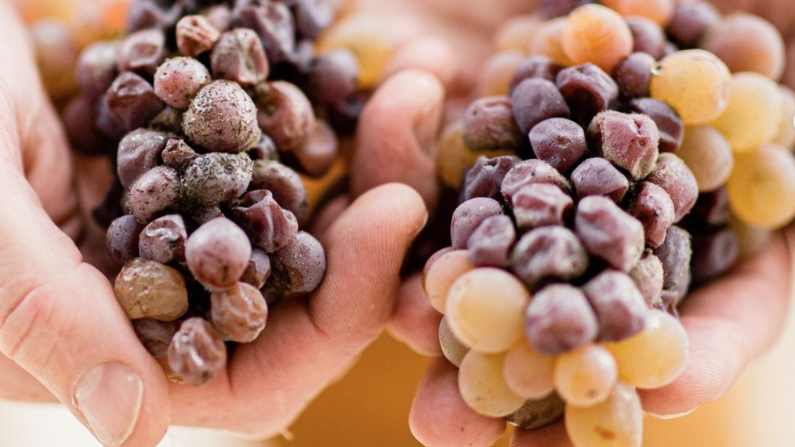
(Source: Sauternes and Barsac AOC)
The key to outstanding sweet wines: high acidity-sugar balance
The best examples of wines affected by noble rot must have a precise balance between the luscious sweetness of the wine and its acidity. That is why the most successful noble rot wines contain grapes with naturally high acidity. Sauternes in Bordeaux is usually a blend dominated by botrytized Semillon with the highly acidic Sauvignon Blanc. In Germany, these wines are made from Riesling with its famous piercing acidity, and in Tokaji-Hungary it is led by Furmint, also a grape of soaring acidity.
It is the combination of this high acidity and residual sugar on top of the concentrated flavor that gives these premium wines great aging ability to last decades and even a century. Young botrytized wines are characterized by notes of honey, orange, citrus zest, apricot, ginger, and almond while aged wines typically display aromas of honey, dried apricot, grilled pineapple, spice and nuts. These wines are full bodied, golden in color- varies depending on the age- and are usually sold in bottles smaller in size than the standard wine bottle.
Famous regions of noble rot wines
The classic Sauternes

One of the most famous and premium regions to produce these sweet wines is Sauternes in Bordeaux. Noble rot, or “pourriture noble” as it is called in France, is frequent in this region with vineyards grouped on the banks of the Ciron and Garonne rivers. These wines are dominated by Semillon, a thin-skinned white grape that is highly susceptible to noble rot, blended with Sauvignon Blanc that contributes the necessary high acidity to the wine. Muscadelle can also be added for floral aromas. The finished wines are usually oaked and should have a minimum of 45 g/L of residual sugar with generally high alcohol and acidity.
Also in France, the regions of Alsace and Loire are known to produce wines made from fully botrytis affected grapes. In Alsace, these wines are labeled ‘Sélection de Grains Nobles (SGN)’. They are single varietals and can be made from Riesling, Pinot Gris, Muscat and Gewurztraminer. In Loire, botrytized sweet wines are made exclusively from Chenin Blanc and the most famous appellation there is ‘Quarts de Chaume Grand Cru’ located conveniently next to Layon River.
The iconic Tokaji

The first botrytized wine made in Europe was the Tokaji Aszú in Hungary, originally made in the mid-1600s. Here the noble rot wine is the star of Hungarian wines and it is mainly dominated by Furmint supported by the grapes Hárslevelű and Sárga Muskotály (Muscat Blanc à Petits Grains). Tokaji Aszú has a minimum residual sugar of 120 g/L and is required by law to be oaked for 18 months minimum. There is an even sweeter version of this wine called Tokaji Eszencia with a minimum residual sugar of 450 g/L but these wines are very rare.
The fresh German TBA

The premium botrytized wines of Germany are distinctive for their freshness and high acidity, all thanks to Riesling. These wines are usually unoaked to preserve the freshness and aromatics of the grape and are low in alcohol with flavors mainly of honey, flowers, and dried stone fruit. They are classified as Trockenbeerenauslese (TBA), literally ‘dry berry selection’, with a grand reputation as the very best of the sweet wines globally. They are not produced every year and their respective vineyards usually overlook main rivers like Mosel and Rhine.
Consumption and future
Once popular and desired, sweet wines have recently fallen out of favor. One reason might be that the wine drinkers are mistakenly associating sweetness in wine with low quality or that they regard them as merely a dessert wine. However there seems to be a lot of effort put recently to educate about the high quality of these wines and their friendliness with food by the wine producers themselves, restaurants/chefs/ sommeliers as well as wine journalists and educators. In parallel, these wines are witnessing an ‘image makeover’, being ‘elevated’ from dessert wines in restaurants, integrating them in menus and pairing them with savory foods such as grilled pork ribs, sweet and spicy Thai food, aged and blue cheeses, and the classic match- foie gras. There is also an effort to make these wines more approachable, encouraging drinkers to consume them young and not just laying them down to age.
The unlikely transformation of rotten grapes into sweet wines is mind blowing and the words of Jamie Goode in his book “Wine Science” always ring true when they’re mentioned : “I don’t know who first came up with the idea of making wines from rotten grapes…But whoever first took the plunge, I am glad they did, because sweet wines made from grapes that have succumbed to “noble rot” are some of the treasures of the wine world”.
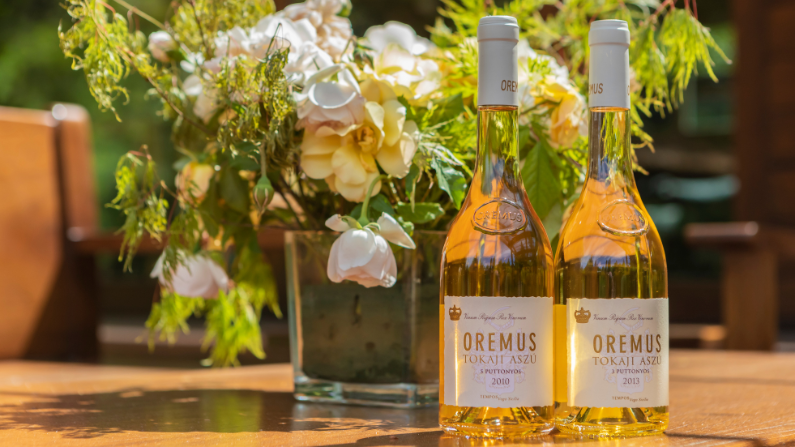


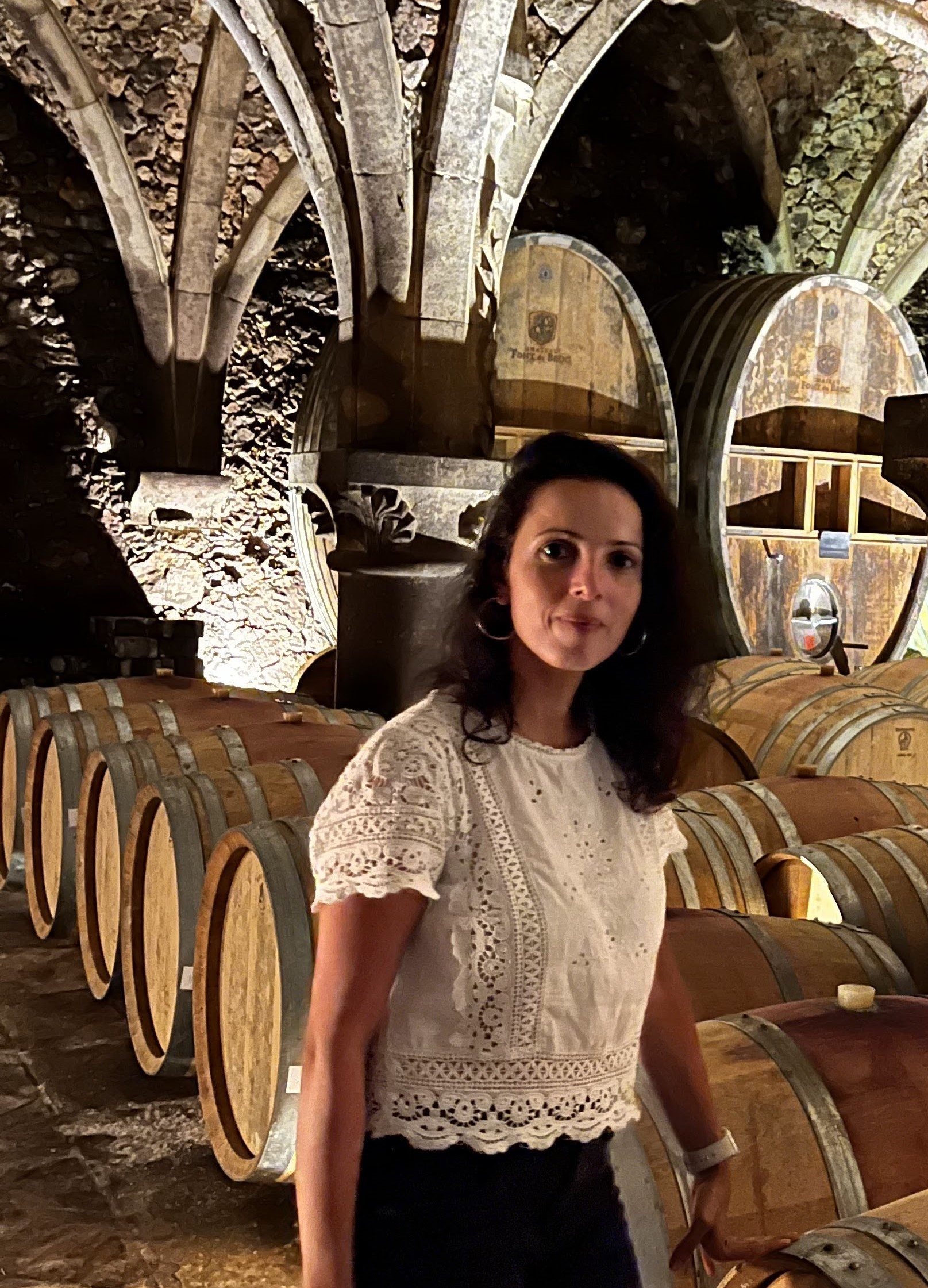
Rana is a certified WSET3 and French Wine Scholar. She is a forever student with a passion for wine stories and converting wine drinkers to enthusiasts following their own wine journeys. Rana comes from the ancient land of wine Lebanon and currently lives in Dubai with her other two passions, her kids.
IG: @thewineofthings
Website: https://thewineofthings.com


